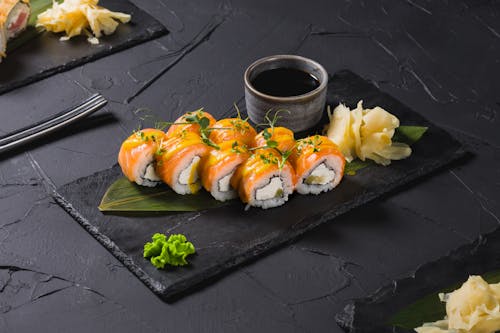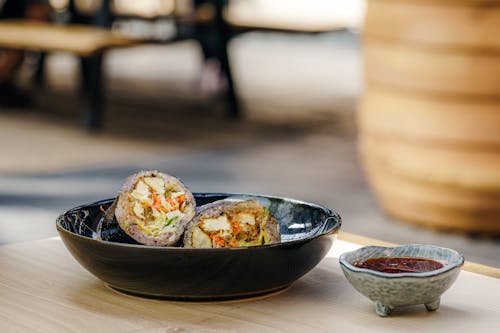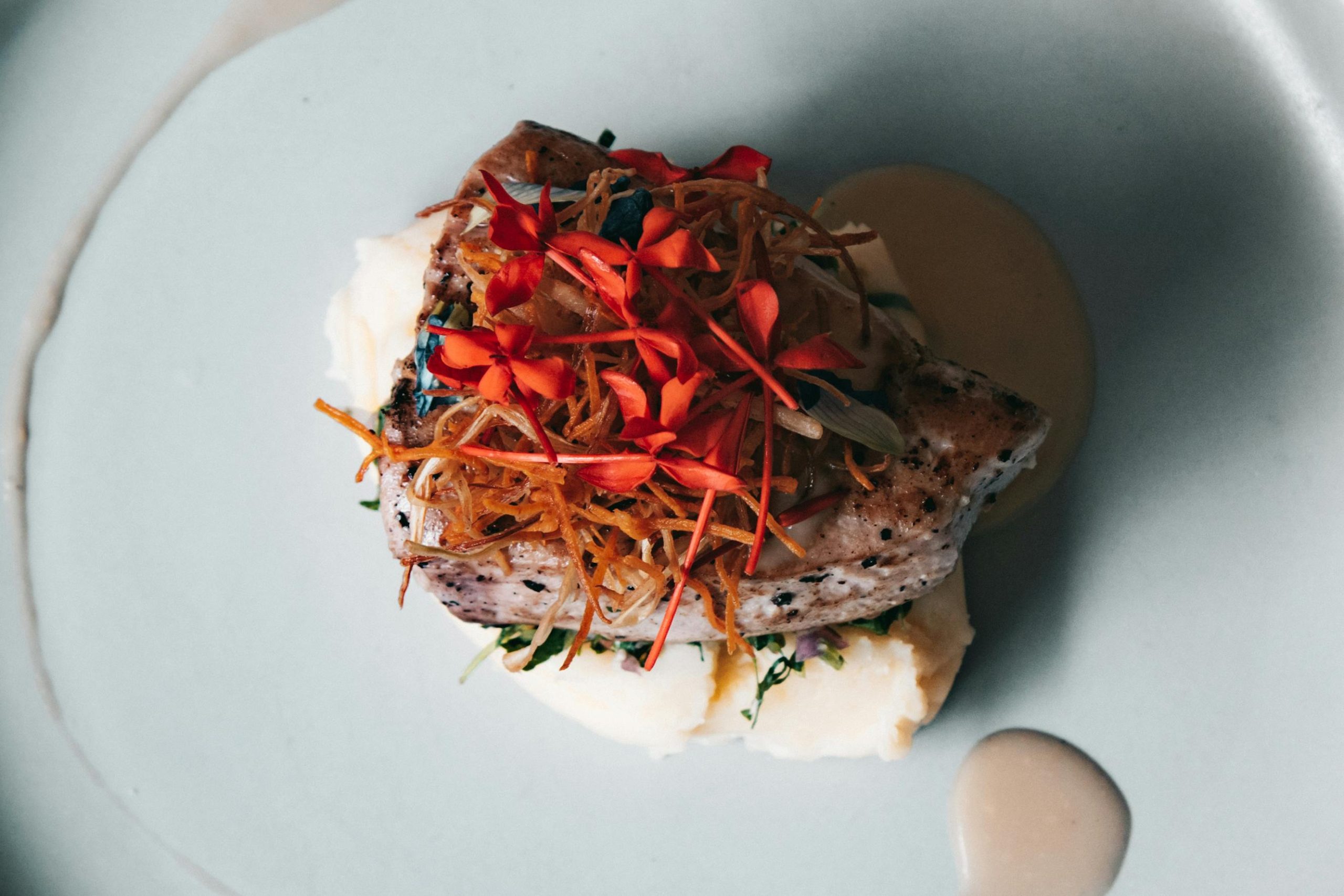Food has always been a reflection of culture, history, and geography. Over time, as people have traveled, traded, and shared recipes, different culinary traditions have intertwined, resulting in new and exciting flavors. One of the most exciting evolutions in the culinary world is fusion food, where ingredients, techniques, and flavors from different cultures merge into something unique. Fusion food has created a dynamic and diverse food scene, making its mark in restaurants, street food stalls, and home kitchens worldwide. But what exactly is fusion food, and what makes it so captivating?
What is Fusion Food?
At its core, fusion food is the blending of culinary traditions from different cultures, often resulting in dishes that break the rules of conventional cuisine. It takes the best aspects of different food styles and combines them in innovative ways. The ingredients, cooking techniques, and flavor profiles from two or more distinct cultures or regions come together to create something entirely new.

Fusion food often challenges the boundaries of traditional cooking, and while it can sometimes be seen as controversial, it allows chefs to play with flavors and textures in ways that would have once been unimaginable. Whether it’s mixing French techniques with Asian ingredients or combining Latin American and Mediterranean influences, fusion cuisine is about creativity, experimentation, and a willingness to push boundaries.
The Origins of Fusion Cuisine
The roots of fusion food can be traced back to global exploration and trade. As cultures interacted, they began to share ingredients, spices, and cooking methods. In the past, chefs from different parts of the world would experiment with these new ingredients and create dishes that represented a blend of their heritage and new influences. However, it wasn’t until the 1970s and 1980s that fusion cuisine began to take on its modern form.
The most influential catalyst for the rise of fusion food came from chefs in the United States. Many chefs, especially in cities like New York, Los Angeles, and San Francisco, started mixing European cooking techniques with Asian, Latin American, and African ingredients. The term “fusion cuisine” was coined to describe this exciting new approach to food. Chefs like Wolfgang Puck and Roy Yamaguchi, who introduced Asian flavors into classic French dishes, played a significant role in popularizing fusion food and laying the groundwork for what it is today.
Popular Examples of Fusion Food
Fusion food can take many different forms, from subtle pairings of flavors to bold, unexpected combinations. Here are some of the most popular and delicious examples of fusion cuisine that have gained worldwide recognition:
- Sushi Burrito
Combining the fresh, delicate flavors of sushi with the hearty, portable nature of a burrito, the sushi burrito has become a favorite among food lovers. Wrapped in seaweed, rice, and filled with an assortment of fresh fish, vegetables, and sauces, this dish brings together the best of Japanese sushi and the convenience of Mexican burritos. - Korean BBQ Tacos
One of the most famous fusion dishes, Korean BBQ tacos, combines the bold flavors of Korean barbecue with the beloved Mexican taco. Soft tortillas are filled with marinated grilled meats like bulgogi (thinly sliced beef), kimchi, and pickled vegetables, creating a perfect balance of savory, sweet, and spicy flavors. - Chicken Tikka Masala Pizza
Indian-inspired pizza has grown in popularity, with the chicken tikka masala pizza being one of the most well-known examples. The traditional pizza crust is topped with a spicy tomato-based curry sauce, grilled chicken tikka, onions, cilantro, and a touch of cream, combining Italian pizza with Indian flavors. - Ramen Burger
A combination of Japanese ramen noodles and the classic American hamburger, the ramen burger swaps a traditional bun for two crispy ramen noodle “buns.” Inside, you’ll find a juicy beef patty, lettuce, and special sauce, offering a unique take on two beloved comfort foods. - Paella Risotto
Paella, the traditional Spanish dish, gets a twist in this fusion creation. Risotto, an Italian favorite, is prepared using the same flavors and ingredients found in a traditional paella, such as saffron, seafood, and chorizo. The result is a creamy, rich dish with Mediterranean influences, combining the techniques of both countries.
The Appeal of Fusion Cuisine
There are several reasons why fusion food has become a global phenomenon. One of the key factors is the growing interconnectedness of cultures. As travel becomes more accessible and technology bridges the gap between people from all over the world, culinary traditions are blending in more diverse and exciting ways. Chefs, restaurateurs, and home cooks alike are eager to experiment with new ingredients and methods, resulting in bold and innovative flavors.

Another reason for fusion cuisine’s popularity is its ability to appeal to a wide variety of palates. By combining familiar ingredients with new techniques or flavors, fusion dishes can be both comforting and adventurous. They often strike a perfect balance between tradition and innovation, offering the best of both worlds.
Fusion food is also a reflection of the multicultural nature of modern society. As the world becomes more globalized, the ability to fuse different culinary traditions helps create a sense of inclusivity, celebrating the diversity of cultures. For people living in cosmopolitan cities, where various ethnic communities coexist, fusion cuisine provides a way to connect with different cultures through food without leaving home.
Criticism of Fusion Cuisine
While fusion cuisine has been widely embraced by many, it has also faced criticism. Some purists argue that fusion food dilutes the integrity of traditional dishes and culinary practices. For instance, when chefs take beloved national dishes and alter them, it can be seen as disrespectful to the culture and heritage behind those recipes. In some cases, critics argue that fusion cuisine is driven more by trends and profit than by genuine cultural exchange or creativity.
Moreover, not all fusion dishes work as intended. When combining flavors or ingredients from vastly different cuisines, there is the risk of creating combinations that clash rather than complement each other. Fusion food requires careful balancing of flavors, textures, and techniques to succeed, and not all fusion experiments are successful.

Fusion Food in the Home Kitchen
While fusion food has made its mark in high-end restaurants, it’s also a trend that home cooks are embracing. The versatility of fusion cuisine means that anyone can experiment with combining flavors from different cultures, regardless of culinary experience. Whether it’s swapping traditional spaghetti sauce for a spicy coconut curry or adding miso to a Mexican mole, home cooks have the freedom to play with ingredients and recipes, creating dishes that suit their tastes and preferences.
The beauty of fusion cooking lies in its adaptability. You can take elements from different cuisines to suit your personal style, whether you prefer bold spices or delicate flavors. The key is to experiment, find combinations that work, and most importantly, have fun with the process.
The Future of Fusion Cuisine
The future of fusion cuisine is limitless. As technology advances and global trade increases, we can expect even more fusion trends to emerge, blending flavors from regions that have yet to be explored. We may see new hybrid dishes that combine the best of plant-based foods with traditional meat-based recipes or sustainable seafood with exotic spices.
As long as chefs and home cooks continue to push the boundaries of creativity, fusion food will continue to evolve, offering an exciting and dynamic culinary experience. Whether it’s blending flavors from different regions or experimenting with new cooking techniques, fusion cuisine will remain at the forefront of the culinary world.
Fusion food is a celebration of the evolving world we live in—where borders are no longer confined to countries, but are blurred through the universal language of food.




